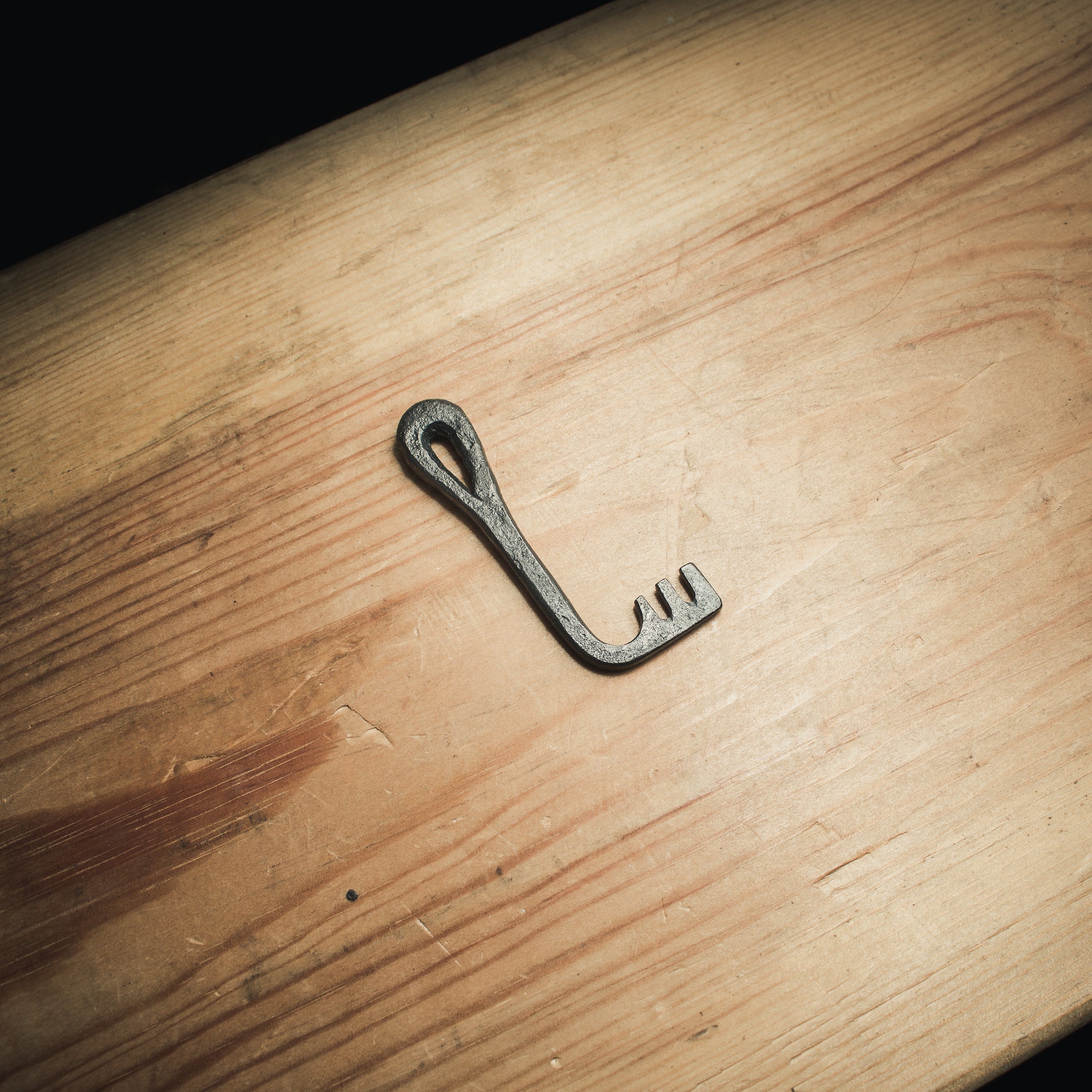In the luminous glow of my forge, I was about to craft something that intertwined the tactile art of blacksmithing with the deep roots of history - a Viking-age key. My tool of choice was a sturdy 6 by 6, a hardy and robust material for the intricate process ahead.
As every blacksmith knows, no two forges are alike. Thus, I brought along my trusty journal, a log of all my past creations, their measurements, and other notes that could guide me in replicating the same size and essence of the previously forged items.
Today’s project was not merely about forging. It extended to include a process known as forge welding. First, I crafted a scarf. This was followed by marking specific points on the material that would later form the essence of my key. This part of the key was meant to forge weld, hence, the initial step was to sculpt a scarf.
With marks made at approximately 30 millimeters from the end, I began drawing out the iron to about forty millimeters, rounding it finely to form the top of the key. Here, in the fires of the blacksmith's forge, the loop of the key started to take shape.
Next came the process of welding the loop of the key. Its mild-steel component meant I didn’t need borax. Instead, high temperatures would act as the flux themselves.
Recognizing the right temperature at which to forge weld can be a matter of experience. A key indicator was an almost white fire in the center of my forge, and when my working piece mirrored that color, I knew it had reached the desired temperature. This was followed by a slow and steady approach to heating the piece thoroughly, not just the surface.
After the welding process, I worked on making the scarf subtler. Forging on the horn, the scarf was pushed in to make it less visible, which by no means meant it had to completely disappear.
I believe that showcasing the craftsmanship journey, like evidence of the forge weld or the hand-punched holes, adds value and authenticity to each unique piece.
The next step involved refining the loop, bringing it up to welding temperature one last time to ensure a seamless weld and make the finished piece smoother.
Next, I was set to create the teeth of the key. A set-down was made at 30 mm from the end of the key, and a smooth taper was formed, giving birth to the unique teeth of the Viking key. I then cut it off at 15 mm.
With the teeth in place, the key was almost ready. But to make it unique, I planned an engraving - each piece a story etched in history.
After some final refinements and engravings, this power symbol, a Viking-age key, emerged from the depths of fire and iron, a symbol of art, history, and stoic resilience.

